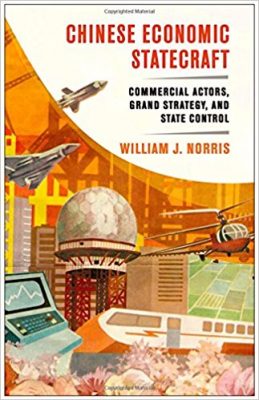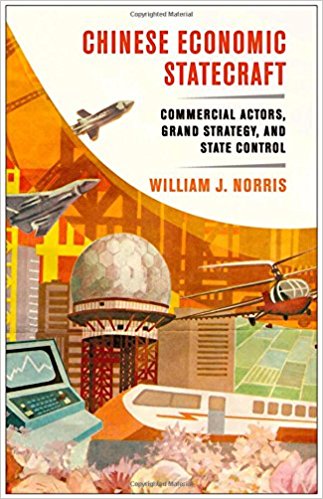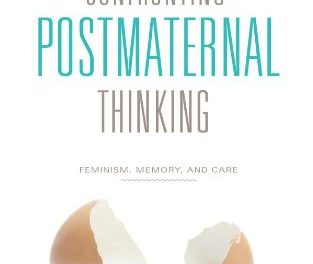 Author: William J. Norris
Author: William J. Norris
Publisher: Cornell University Press – 303 pages
Book Review by: Sonu Chandiram
The United States had the largest economy in 2015, with $18.562 trillion in gross domestic product reported in October 2016 by the International Monetary Fund in their World Economic Outlook Database. While China’s GDP was second in the ranking, it was not even close. With $11.392 trillion in total output, it was a mere 61 percent of the size of the U.S. economy.
But that does not mean we should not worry about China. Its strategy of acquiring natural and financial resources and gaining an increasingly larger share yearly of global trade, selling more and more of its products yearly to consumers worldwide, is little known to anyone else except a small number of global economists and observer of China in particular.
The average man on the street is not aware of this, but should be, because his factory job could be the next to go to China and be done by a Chinaman. Read this book, I say to you. Learn what is going on in the Chinese economy. We have already been living in a globalized economy for several decades now, and we all need to know what China has been up to, in taking our jobs and our customers. You will wake up, and stop being complacent when you find out about China’s ‘grand strategy’ of global competition, in this eye-opening book.
China’s economy has been growing at a much faster rate than that of the U.S. over the last three decades or so. Comparatively, U.S. economic growth rate has been declining rapidly. In 2015 for example, China’s growth rate was 6.9 percent, more than two and a half times larger than the United States’ 2.6 percent growth rate. And this does not include cash transactions which are not measurable, so China may be growing about three times as fast as the U.S., or even faster.
Taking a longer look back, China’s average annual GDP growth rate was a superfast 9.76 percent from 1989 to 2016, according to www.TradingEconomics.com. Over the same 28-year period, the U.S. average GDP growth rate was 4.57 percent, or less than half that of China. Shocked? Well, a large share of its GDP (economic output) comes from export revenues. China prices its goods lower than other countries through currency moves. Read chapter 8.
The bright spot though is this: the average person in the United States earned much more than his counterpart in China. On a ‘nominal’ basis, the U.S. average GDP per capita income was $56,084 in 2015, nearly seven times that of the average $8,141 earned by individuals in China.
Most economists however cite the GDP purchasing power parity (PPP) per capita as a more realistic basis for comparison. This measure takes into account the local prices for a basket of goods relative to the earnings of people in a given country. On the PPP basis, the average person in China earned $14,340, or about a quarter of U.S. per capita income. This is better than one-seventh as measured on the purchasing parity basis.
The basic point in citing all these statistics is this: citizens and residents should be worried that America’s economic growth has come to a crawl at about two percent a year, and lower real growth when inflation is factored in. We should also be worried that indebtedness is soaring: U.S. government debt nearly doubled in the last eight years from $10.626 trillion in January 2009 to $19.976 trillion in January 2017. See the interactive search site Debt to the Penny at: https://treasurydirect.gov/NP/debt/current.
Can we learn from China? Can we learn how we can smartly acquire scarce, valuable resources? Absolutely. As a matter of fact, this is the very reason why you must read this book, and suggest to your state’s leaders – your governors, congressmen and senators – that they read it thoroughly.
William Norris takes an inside look at how China’s leaders have been strategizing, after the end of the Maoist era (1949-1976), to achieve security for its people through economic development within China and competitive acquisition of key resources available overseas. Read the two chapters of Part II: Securing Strategic Raw Materials, for a clearer understanding, and ask yourself: why isn’t the United States doing this as well? It makes perfect sense.
News reports have been growing over the years about China’s acquisition, all over the world, of land containing oil and natural gas, precious metals, gems, and other minerals. China has also been purchasing agricultural land and forestry resources in Africa.
Officially and privately, the Chinese have also been buying real estate assets and shares of public and private corporations in the U.S. (India is also buying up in whole or parts of U.S, corporations, but that is another story).
All of the activities we cite above are based on a grand strategy, we believe, and as Norris points out in this insightful work. Contrary to other China watchers who, he writes, deny or doubt that China’s leadership has a strategy, he asserts that there is in fact a Chins strategy in place. An average annual 28-year GDP growth rate of 9.76 percent does not happen by accident. Does it?
This grand strategy of China emanates from the top or national level, and is clearly and carefully communicated in various ways all the way down to lowest levels of government, and to important business leaders.
This is discussed in detail in chapter 3, and forms the basis of almost all 10 chapters, as well as in the Introduction and Concluding Implications. Here below are the titles of the book’s chapters to provide you an overview of the contents of this revealing book:
Introduction: Oil. Iron, Mangoes, and Cash
- Part I. On Economic Statecraft
- What is Economic Statecraft?
- The Challenge of State Control
- Economics and China’s Grand Strategy
- Part II. Securing Strategic Raw Materials
- “Going Out” and China’s Search for Energy Security
- Rio Tinto and the (In)visible Hand of the State
- Part III. Cross-Strait Economic Statecraft
- Coercive Leverage Across the Taiwan Strait
- Interest Transformation Across the Taiwan Strait
- Part IV. China’s Sovereign Wealth Funds
- State Administration of Foreign Exchange
- What Right Looks Like: The National Security Fund
- The China Investment Corporation
Concluding Implications
Appendix 1. Coding f the Independent Variables
Appendix 2. China Investment Corporation’s Direct Investments In the Aftermath of the Financial Crisis
Norris makes these important observations about Chinese economic statecraft in Concluding Implications which are key points and form the overall basis of this book:
- State control is an essential and often overlooked prerequisite of economic statecraft
- State unity is the most important determinant accounting for when state control is likely
- Government support and positive relationships with officials are critical for commercial ventures to succeed
In sum, this is an excellent book on why and how China has leaped forward economically. William Norris has presented well-researched and compelling examples of what works and what does not. The overall lesson we learn from this valuable book is that close public-private cooperation is essential to economic development.
Author:
William J. Norris is an Assistant Professor in the Bush School of Government at Texas A&M University.







